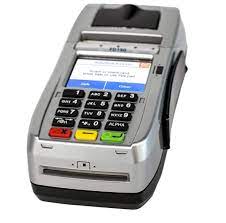
Credit card terminals are indispensable for businesses aiming to provide a secure and efficient payment experience. They cater to cashless transactions, ensuring convenience for both businesses and customers. This article delves into the importance of credit card terminal, their benefits, and how businesses can select the best options to meet their needs.
Understanding Credit Card Terminals
A credit card terminal is a device that processes electronic payments made through credit or debit cards. These devices are integral to modern payment systems, facilitating transactions by reading card data and securely transferring it to the payment processor.
Common types of credit card terminals include:
- Stationary Terminals: Ideal for businesses with fixed payment counters.
- Mobile Terminals: Portable devices perfect for on-the-go businesses like food trucks or event vendors.
- Smart Terminals: Advanced devices with features such as touchscreens, app integration, and contactless payment capabilities.
These devices are designed to work seamlessly with POS systems and other payment solutions, ensuring a streamlined checkout process.
Benefits of Credit Card Terminals
1. Faster Checkout
Credit card terminals speed up the payment process, minimizing wait times and enhancing customer satisfaction. Quick transactions encourage repeat business and improve the overall shopping experience.
2. Enhanced Security
Modern terminals use encryption and tokenization technologies to protect sensitive data during transactions. They comply with PCI DSS standards, ensuring businesses maintain a secure environment for payments.
3. Increased Sales Opportunities
By supporting multiple payment methods, including chip cards, contactless payments, and mobile wallets, credit card terminals attract a broader customer base. Many consumers prefer cashless payment options for their convenience and speed.
4. Improved Cash Flow
Electronic payments processed through credit card terminals are deposited directly into business accounts, ensuring timely fund transfers and smoother cash flow management.
5. Business Insights
Advanced credit card terminals provide detailed transaction data, enabling businesses to analyze sales trends and make informed decisions to boost profitability.
How to Choose the Right Credit Card Terminal
Selecting the right credit card terminal involves understanding your business needs. Consider the following factors:
- Type of Business: A retail store may require a fixed terminal, while a restaurant or delivery service might benefit from a portable one.
- Payment Options: Ensure the terminal supports chip cards, NFC payments, and mobile wallets like Apple Pay or Google Pay.
- Features and Integration: Look for devices with additional features such as receipt printing, analytics, and compatibility with your existing POS system.
- Cost Efficiency: Evaluate the device’s upfront cost, maintenance fees, and transaction charges to find a cost-effective solution.
Choosing the right terminal ensures smoother transactions and better customer satisfaction.
Setting Up and Using Credit Card Terminals
Setting up a credit card terminal is straightforward and can be completed in a few steps:
- Select a Reliable Payment Processor
Choose a processor offering competitive rates, robust customer support, and compliance with industry standards. - Connect the Terminal
Integrate the device with your POS system or connect it to your network via Wi-Fi, Ethernet, or Bluetooth. - Test Transactions
Run sample transactions to ensure the device is functioning correctly. - Staff Training
Train your employees to operate the terminal efficiently, including troubleshooting common issues and assisting customers with payment methods.
By following these steps, businesses can provide a seamless payment experience to their customers.
Overcoming Challenges in Using Credit Card Terminals
While credit card terminals are essential, they may pose challenges, such as:
- Transaction Fees: Work with payment processors to negotiate lower rates or find a provider that offers cost-effective solutions.
- Technical Issues: Opt for terminals with a strong warranty and reliable customer support to resolve problems quickly.
- Data Security: Regularly update software to ensure compliance with security standards and protect customer information.
Proactively addressing these challenges can help businesses maximize the advantages of credit card terminals.
Conclusion
Credit card terminals are a cornerstone of efficient and secure payment systems for businesses. They streamline transactions, enhance customer satisfaction, and provide valuable insights into sales trends. By investing in the right terminal and leveraging its features, businesses can stay competitive in today’s fast-paced market.